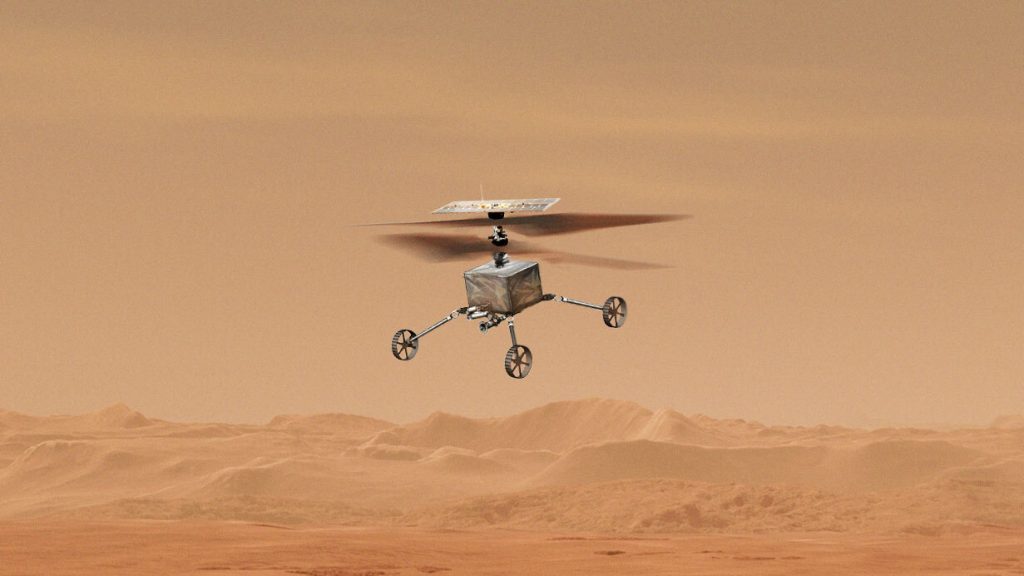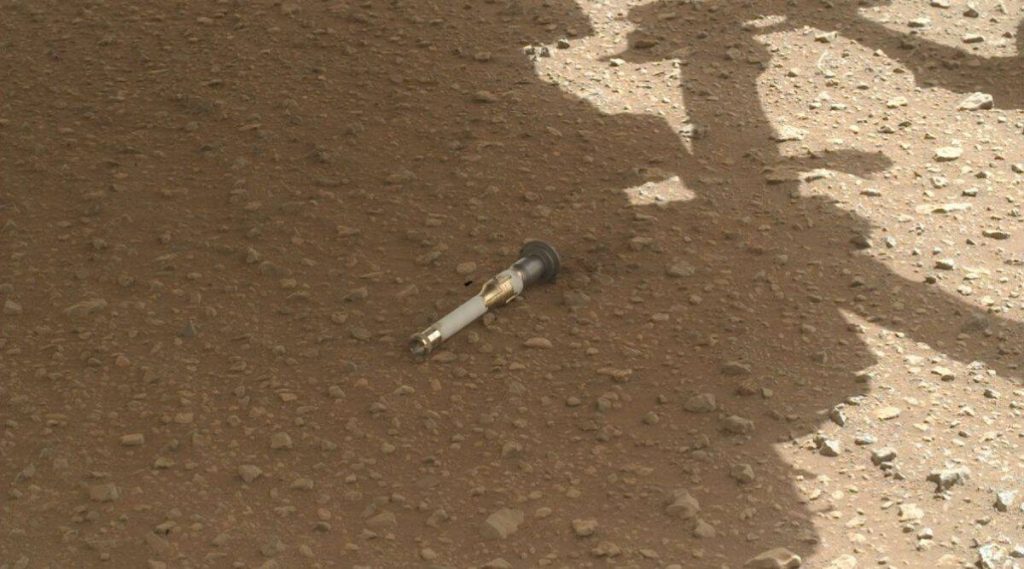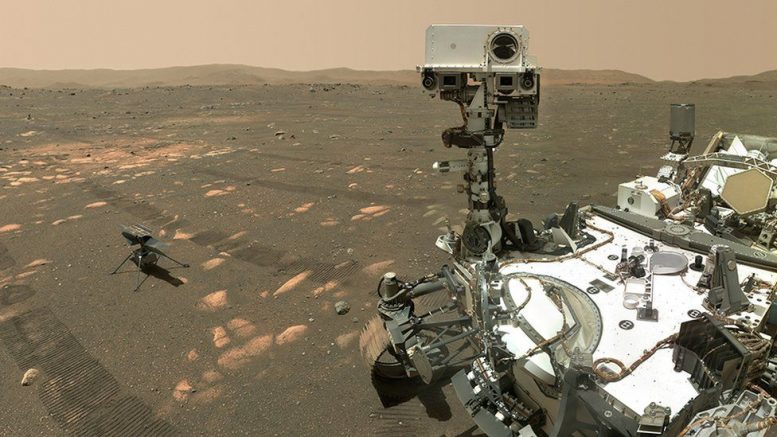On the 21st of December, 2021, the Perseverance rover dropped a previously gathered sample onto the dusty Martian surface below. This was no accident, though. The sample, safe in its titanium capsule, is the first of many which will be deposited in the same location to create the first sample cache on another planet.
Since landing on Mars in early 2021, the Perseverance rover has been collecting a variety of samples including diverse rock cores, tubes of regolith (the dust and debris that coats the Martian surface), and even one capsule filled with a sample of the Martian atmosphere. Together they can give researchers a comprehensive view of the Martian environment while also unraveling the tale of the red planet’s past, but researchers have to be able to examine them first.
Perseverance, like every rover sent before it, has an array of different instruments and sensors, but these tools can only go so far. Its instruments are extremely weight optimized, since it costs about one million dollars per pound of materials launched into space, which comes at the price of more complicated and sensitive functions. Not to mention that more delicate instruments would be unlikely to survive the pressures created by launch.
With this in mind, a plan was born from the scientific brains at NASA: the Martian Sample Return Mission, the most important and complicated mission currently being carried out within the cosmos.
The sample cache started in December is an important step within this plan. The samples dropped there will act as a backup, with the rest of Perseverance’s samples being kept within a storage compartment in its belly.
Since the next step in the mission won’t take place until 2028, researchers need to be sure that there will be accessible samples even if a freak accident renders Perseverance incapable of delivering its samples anytime in the next 5 years. The reason behind such a long gap is that NASA still needs time to finish designing, constructing, and fine-tuning a whole arsenal of machines.
Sending samples back to Earth is not a simple process. In fact, NASA’s Martian Sample Return Mission will be the first time anything like this has even been attempted. Over the next decade, multiple teams will dedicate thousands of hours to the mission and new vehicles will be created for the expressed purpose of bringing these samples back.
The best way to understand such a complicated process is through its specially crafted machines, and the parts of the mission they will carry out.
New Machines & Their Mission
The least revolutionary of these machines is the new Martian lander. It will mostly resemble InSight, a lander previously sent to examine Mars, as it has two large solar panels to generate power, landing equipment, and a robotic arm to allow for the transfer of samples.
If everything goes to plan, then the Perseverance rover will still be able to hand off its samples to the lander’s robotic arm in 2028 (once the lander touches down). If something goes wrong and Perseverance is incapable of delivering its samples, then a new piece of technology will come into play: Martian helicopters.

Concept Art of a Martian Helicopter | Source: NASA
These tiny helicopters are essentially boxes fitted with landing wheels, a tiny gripper arm, a pair of propellers stacked atop each other, and a small solar panel for power. They are designed to utilize the red planet’s low gravity, allowing them to take off and stay airborne with much less power or machinery than would be required on Earth.
The helicopters will be sent over as part of the main lander, from which they would take off to gather the backup samples kept within the recently created stash with their small grippers, returning them to the lander’s robotic arm.
Once the samples have been gathered, the lander will load them into the next new piece of technology called the Mars Ascent Vehicle (MAV). The MAV is essentially a specialized rocket which will come prefilled with solid fuel.
When it’s ready, the lander will initiate the launch in a very unique way: by throwing the rocket into the air a few meters above its head. The rocket, stabilized by the back-heavy force given to it by the launcher, will then ignite its first stage, which will carry it high into the Martian atmosphere. Then the second stage will ignite, taking the rocket into orbit about the planet.
Launching the MAV will be a major milestone for both the sample return mission and the world at large as it will become the very first rocket to launch off from the surface of another planet.
To bring the samples on the final leg of their journey, an orbiter, which will have been previously launched by the European Space Agency, will catch the samples in orbit, load them into a protective casing, and then utilize the precise timing, alongside the planet’s gravity, to send the samples rocketing back towards Earth. They will then enter Earth’s atmosphere, safe in their protective casing.

Image of a Sample on the Martian Surface, Taken by Perseverance | Source: NASA
The Impact
By 2030, these samples will be arriving at our doorstep, but what might their impact be upon science at large? Why should we care about some red ball of rocks and dust that lies millions of miles away from us?
Mars wasn’t always the red planet. In fact, at one point in its history, the planet actually harbored liquid water and even lakes. This makes Mars an essential point of comparison for Earth and many exoplanets (planets that reside in solar systems outside of our own). The tale of Mars is one of catastrophe, so understanding it means understanding the forces behind planetary catastrophes, huge events which can change the face of a planet, and how they affect its habitability.
There is even a chance that the Martian samples could tell us whether life has ever existed on Mars. Microbial fossils are tiny and only detectable by the most advanced microscopes and testing equipment—the exact equipment we cannot send on a rover. By examining the Martian samples with the instruments available to us on Earth, researchers can finally be sure of whether Mars has ever possessed life, a game changer in the world of astrobiology.
Though it will take over a decade of dedicated work, the Martian Sample Return Mission has the chance to change how we view the universe around us and the future of science in space.






Be the first to comment on "Samples From Mars Soon To Come Home"